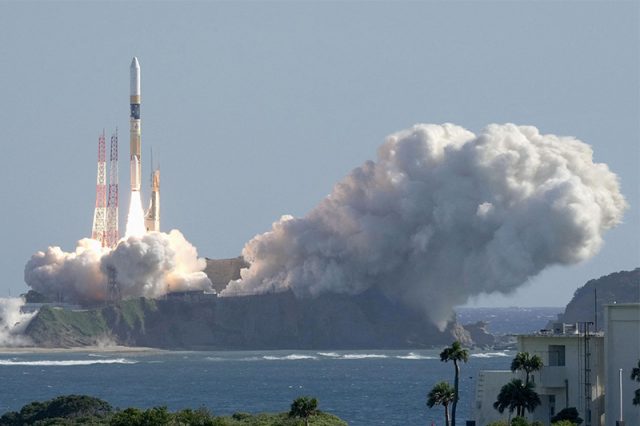
TOKYO — Japan aims to become the fifth country to put a spacecraft on the moon when it tries a precision landing on Friday.
The Smart Lander for Investigating Moon (SLIM) is attempting to land within 100 meters (328 feet) of its target. Japan Aerospace Exploration Agency (JAXA) says the technology will become essential to searching for water, and other factors that could sustain life on the moon.
Here’s a timeline of some events in Japan‘s space programs leading up to the planned SLIM touchdown.
| YEAR | PROJECT | DEVELOPMENT |
| 1970 | Ohsumi | A University of Tokyo lab launched the first Japanese satellite on a homemade rocket, opening Japan‘s space age. Aerospace engineering was previously banned under a U.S.-led occupation after the end of World War II until 1952. |
| 1990-1993 | Hiten | Japan launched its first lunar probe and conducted navigational experiments between the earth and the moon. The spacecraft was manually collided onto the moon at the end of the mission. |
| 2001-Present | H-IIA | The flagship medium-lift rocket has been successful at 47 of 48 launches, but JAXA plans to retire it after two more launches and replace it with low-cost H3. |
| 2003-2010 | Hayabusa | The spacecraft made a rendezvous on an asteroid named Itokawa in 2005 and marked the world’s first mission to deliver asteroid samples to the earth in 2010. |
| 2007-2009 | Kaguya (SELENE) | The lunar orbiter obtained high-definition images of the moon’s surface and other scientific data until manually sent to crash onto the moon. |
| 2014-Present | Hayabusa2 | The successor to Hayabusa touched down on the asteroid Ryugu in 2019 and brought a sample capsule back to the earth in 2020. JAXA keeps operating the craft to study planetary defence from small celestial objects approaching the earth. |
| October 2022 | Epsilon-6 | JAXA manually destroyed the sixth model of Epsilon solid-fuel small rocket after launching because of its deviant trajectory, marking Japan‘s first rocket launch failure since 2003. |
| November 2022 | OMOTENASHI | The small probe was meant to achieve Japan‘s first soft landing on the moon. But JAXA lost contact with it shortly after it was launched as one of 10 secondary payloads for the first mission of NASA’s Artemis Program. |
| March 2023-Present | H3 | JAXA manually destroyed the initial model of the new flagship rocket after launch due to engine ignition trouble, causing widespread delays in Japan‘s space missions including SLIM. H3’s second model is set be launched on Feb. 15, 2024. |
| April 2023 | Hakuto-R Mission 1 | Tokyo-based startup ispace inc <9348.T>attempted what could have been the world’s first private-sector lunar landing, but the spacecraft crashed onto the moon due to altitude miscalculation. The company plans to launch the second mission in the fourth quarter of 2024. |
| July 2023 | Epsilon S | An engine of a new type of Epsilon small rocket exploded at JAXA’s testing site. The accident delayed upcoming satellite launch plans, including Vietnam’s earth observation satellite that was due to be brought to space by the first model of Epsilon S. |
| September 2023-Present | SLIM | JAXA launched SLIM two weeks after Indian counterpart achieved its Chandrayaan-3 mission to the unexplored lunar south pole. SLIM took a fuel-efficient four-month trajectory to the moon and will start a 20-minute touchdown phase from 1500 GMT Friday. |
Sources: JAXA, National Diet Library, Reuters reports
— Reporting by Kantaro Komiya; Editing by Frances Kerry









